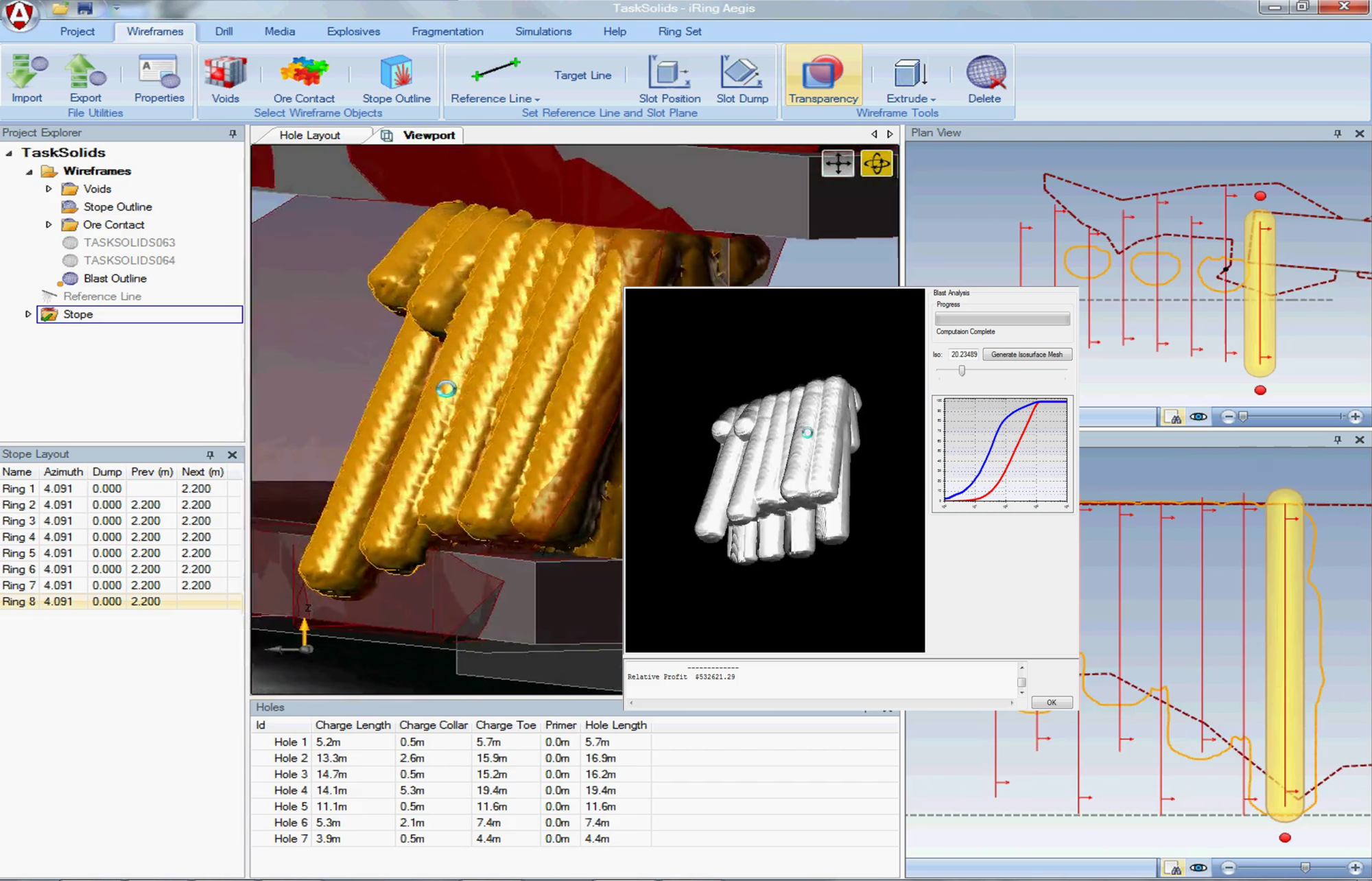iRing has announced “a breakthrough technology in ring design for underground mines” that uses a completely new blast design model. The development of this innovative blasting technique uses a unit charge and stress reflection methodology in conjunction with electronic detonators to design ring patterns with the objective of transforming underground blasting operations into primary crushing operations.
AEGIS Break Analyzer has been developed using extensive field testing as well as very specific near-field monitoring methods from production blasting operations employing analytical models including explosive energy as well as characterisation of rock/ore masses using dynamic modulus, shock decay, and strength/structure. “The unique workflows and calculators used by the software allow ring designs to be planned from scratch as well as providing the ability to improve existing designs. Additional benefits can also be realised, specifically when changing to new explosive products with any change of explosive suppliers. Add new explosive products to the explosives database and run through current and previous designs to evaluate potential improvements, or determine potential unexpected diminished performance keeping other parameters constant and unchanged.”
This advanced software technology considers both detonation state and explosion state properties of commercial explosives strategically placed in drill holes in ore. The intent is to ameliorate the use of expensive crushing equipment in the underground mining environment. Blasting operations designed by AEGIS Break Analyzer can transform underground blasting operations into primary crushing operations – either to diminish the reliance on expensive underground crushers as the main means of delivering fragmented ore to a mill – or by drastically improving the costs of crusher operations providing considerable savings.
“Using the new model, the conditions necessary to ensure that blasting operations are consistent from stope to stope, orebody to orebody provides a significant paradigm shift concerning blasting geometry, energy, and precise ring sequencing in conjunction with the use of electronic detonators. Using dynamic properties for both explosive products and rock/ore types including the use of site factor/shock decay methods results in the ability to obtain unheard-of fragmentation precision regarding maximum recoveries and greatly improved economics in ore extraction.”











